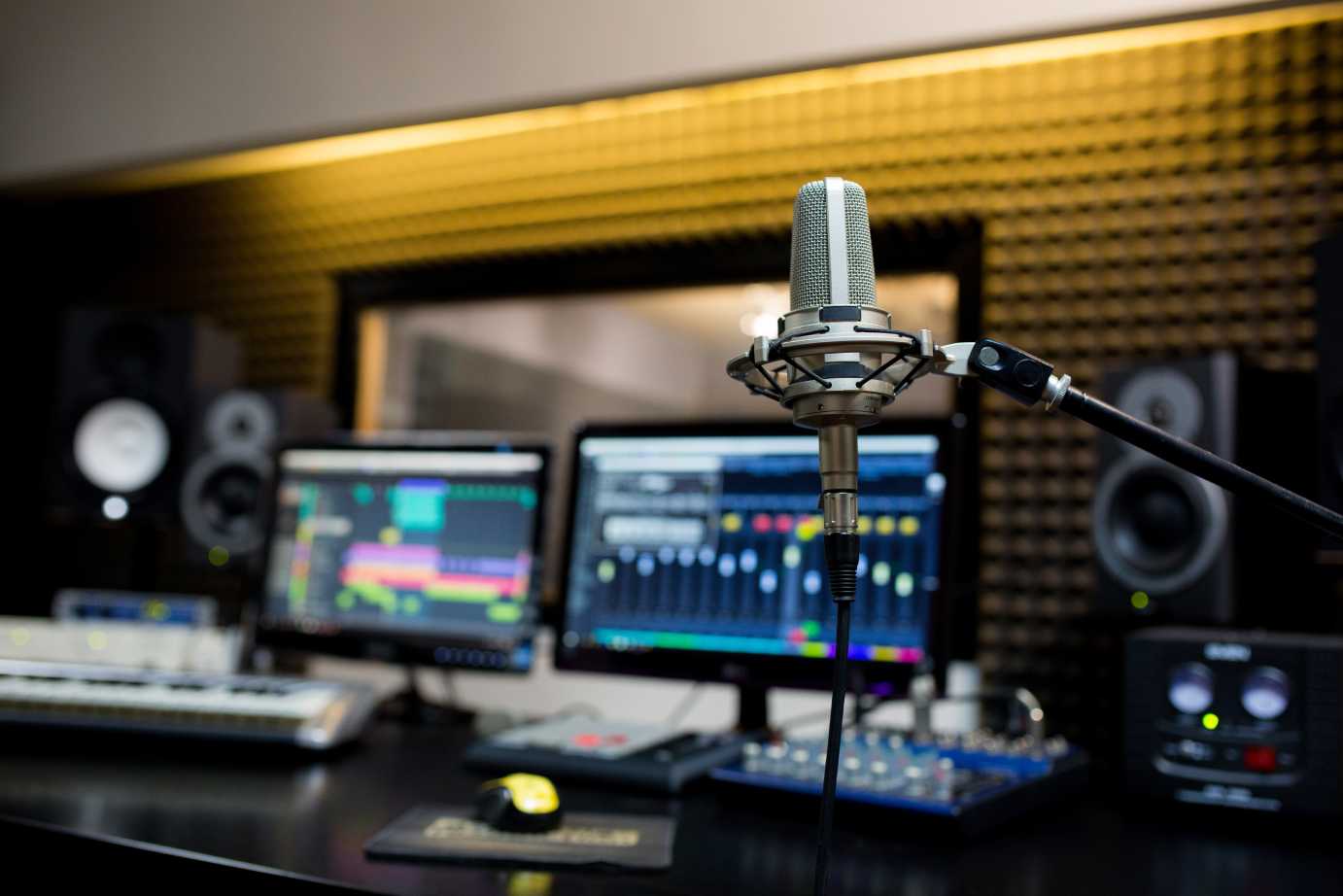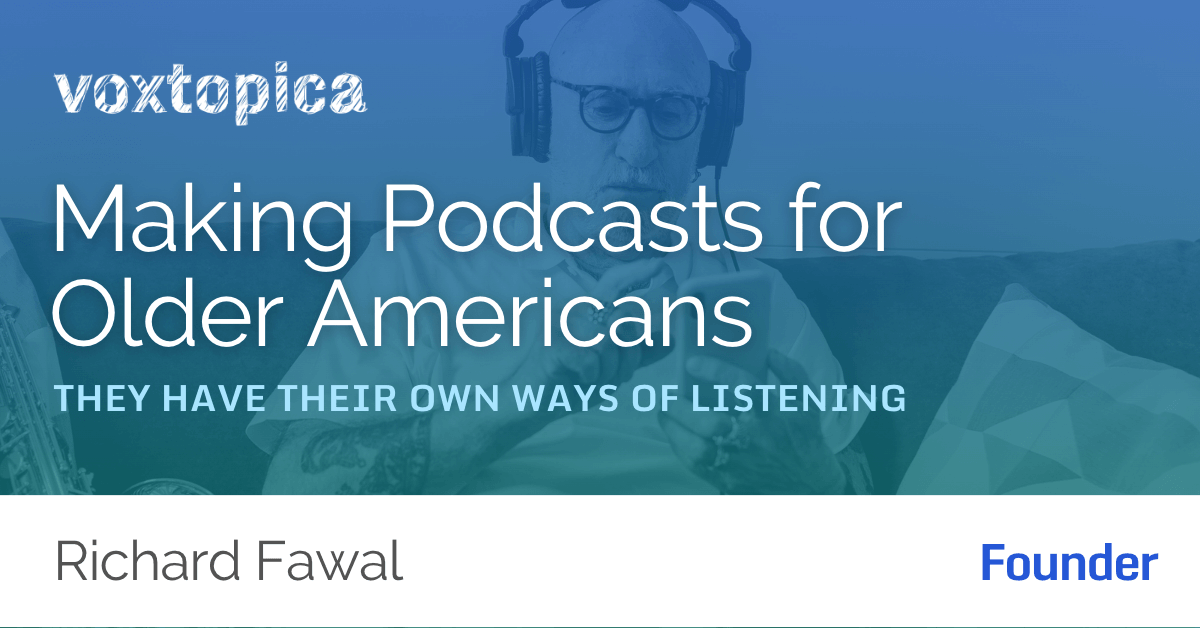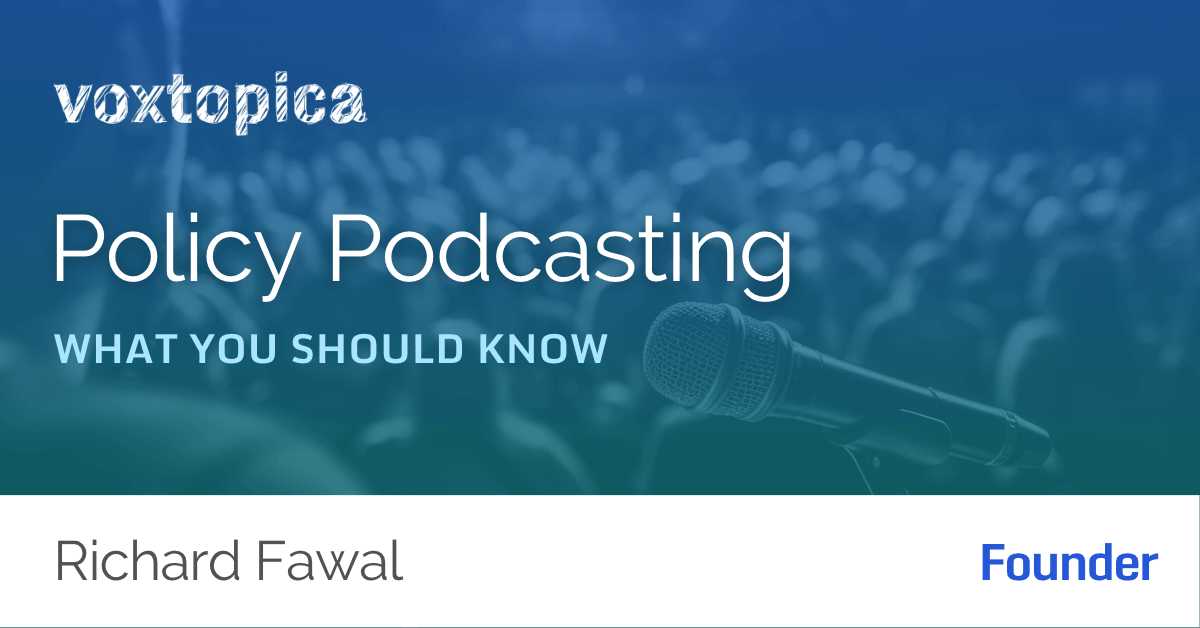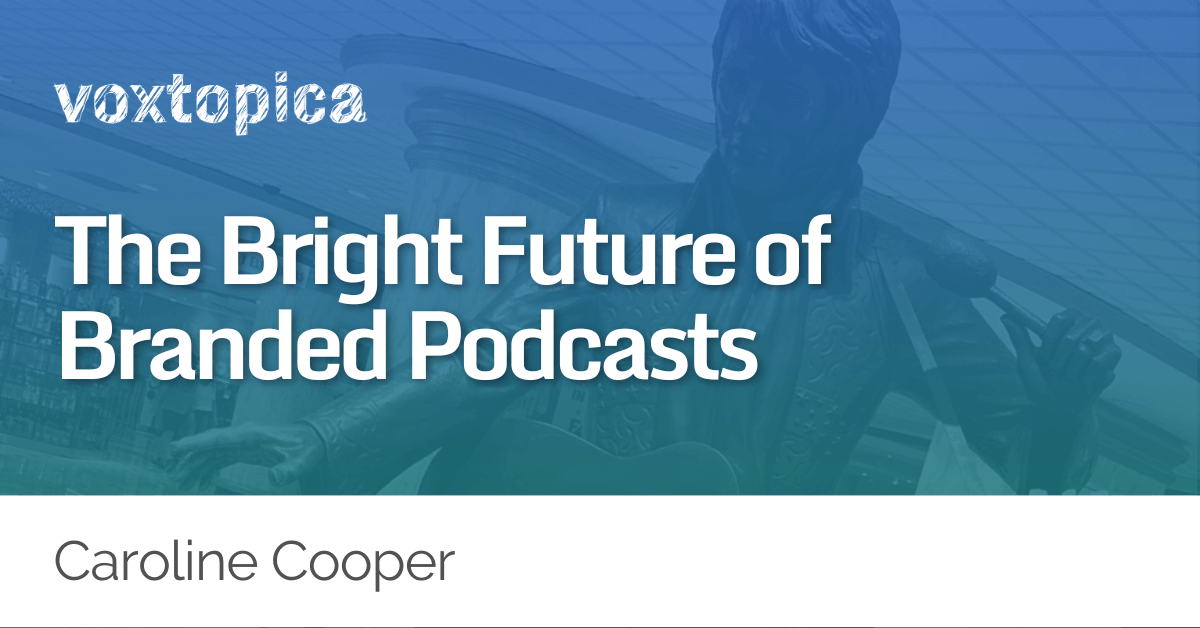
What You Need to Know
Podcasting is becoming an increasingly common communication tool for public affairs and science policy organizations. Organizations like the Brookings Institution, the American Bankers Association, and the National Academy of Sciences use podcasts to engage with critical audiences weekly.
At Voxtopica, we’ve learned a thing or two about reaching niche audiences with podcasts about industries, scientific research, and public policy news. We’ve produced over a dozen shows for associations, academia, and advocacy.
There are incredible opportunities for organizations in these spaces to engage with their most important audiences through podcasting. Too often, however, organizations miss out on these opportunities. Sometimes, bureaucracy exerts a tremendous force that pulls content toward mediocrity (to paraphrase Dan Misener). Often, communication professionals approach podcasting without a clear understanding of the medium.
There are three things any non-profit, PR, or public affairs communication professional should understand about podcasting to ensure you capitalize on the opportunities and achieve the maximum return on your investment. Each is described in detail below.

#1: A Podcast is a Show
A podcast is unlike anything most policy communicators have ever done. They sometimes make the mistake of trying to make a podcast the same way they produce other content. Sometimes they make podcasts that sound like a white paper or webinar, but that’s not what a podcast is. It’s a show, just like The Joe Rogan Experience and My Favorite Murder. You must relentlessly release interesting, engaging new content on a consistent schedule.
You can make an excellent policy podcast your audience will love. The simple rules are to be entertaining and consistent. Always.
Always be Entertaining
For many organizations producing podcasts, the focus is on guests, topics, and the next episode. This approach usually leads to what we playfully call “the lurch,” in which producers focus exclusively on one episode and, when it’s released, shift their focus to the next, lurching from one episode to another without looking at the totality of the show.
In the worst cases, so much energy is expended to get the next episode out on time that little is put into ensuring any episode is the best it can be.
This approach misses a huge opportunity to engage an audience. By shifting the focus to the listeners, you can plan episodes around what they will find most interesting, meaningful, and, yes, even entertaining.
Simply stated, instead of asking, “Who should be a guest?” or “What do we want to tell listeners?” you should ask, “What do people want to learn?” and “What special stories can we share?” Don’t make a podcast that just checks the organization’s communication boxes. Make a show that inspires your listeners with content that makes them laugh, cry, and think.
You’re producing a show, and shows are made for audiences, not producers. Producers succeed when we have an audience of engaged listeners who will act when we want them to.
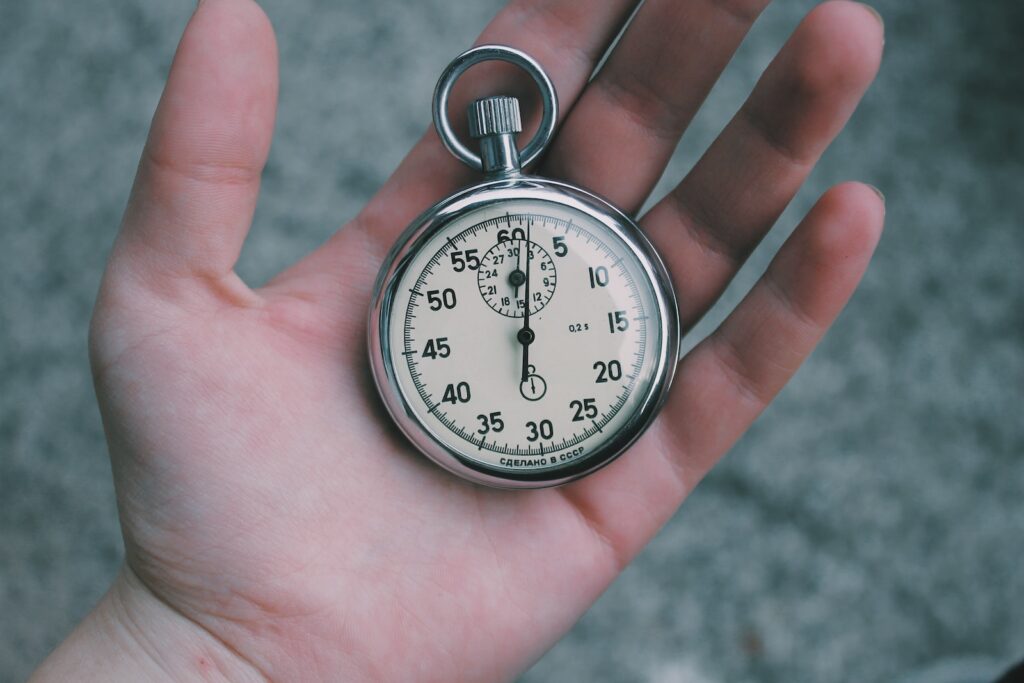
Always Be Consistent
Another risk of “the lurch” is the high potential for a release failure. When a guest cancels, or a news story changes, the plan for an episode can quickly go out the window. If there’s no time for a Plan B, there won’t be a new episode for your audience.
A plethora of communications research demonstrates the importance of consistency. Our internal podcast data support the conclusion that failure to release podcast episodes regularly negatively impacts listenership. Miss one episode, and you’ll likely have fewer listeners for the next. If you’re consistently inconsistent, it’s practically impossible to sustain an audience.
The opportunity costs of inconsistency are extremely high, mainly because it’s not very hard to consistently produce and release a podcast. All you need to do is create multiple episodes simultaneously.
In fact, working on multiple episodes simultaneously makes it easier to create entertaining content. When there’s no urgent pressure to release an episode, you have the time to tell great stories and explain complex issues in interesting ways that will keep your listeners fully engaged in the episode.
If you do this well, you can have two to three episodes ready to release anytime. An efficient production process also has the added benefits of a more relaxed production team and higher-quality content since you can take the time to ensure an episode is the best it can be before putting it out into the world.

#2: Your Audience Listens to Podcasts
Getting a regular podcast listener to add your show to their rotation is far easier than getting a non-listener to make your show the exception. When discussing a podcast with a potential new client, we remind them not to expect their show to be anyone’s first podcast.
Most everyone we talk to understands and accepts this, yet many make no effort to think about their audience as podcast listeners. Communicators think of them as members of an organization, a profession, an industry, or perhaps as “concerned citizens,” but they don’t generally consider what it means to be a “podcast listener” even if they are avid listeners themselves.
If you want listeners to love your show, you must remember that they have expectations, and you have competition.
Sign Up for Monthly Voxtopica Updates
Meet Their Expectations
Two of the first questions policy communicators ask us when they consider podcasting are, “How long should the episodes be?” and “How often should we release episodes?” They ask these questions because they think the answers are fundamental. But in reality, length and cadence are relatively low on the list of listeners’ priorities.
For example, Dan Carlin’s Hardcore History releases a single five-hour episode about once a year. The show averages 500,000 listeners per episode, so it’s clear that the content overrides the length and cadence.
The essential expectation consumers have of podcasts is value. Podcast listeners expect to get valuable content in exchange for the time they invest in listening. If they find value in your content, they will accept almost anything else – including just one very long episode every 12 months.
Listeners also expect quality. It should go without saying that your audio quality must be excellent, but the quality of your content should be, too. Podcast listeners expect you to hold their attention while they drive, exercise, or do chores. Don’t ignore that.
As you plan episodes, be intentional about the value you will provide listeners. Ask yourself how they should feel when listening to a guest or topic, then use the tools podcasting offers to help them feel that way (editing, voice-over, and sound design, to name a few).
Listeners also want to feel that they are part of something larger. While they don’t necessarily expect to participate, they do want to feel included. Avoid what we call the “Starbucks Effect,” where podcast listeners feel like they’re eavesdropping on a conversation at another table in the coffee shop because the host and guest are too engaged with each other.
Help your listeners feel included by speaking directly to them as often as possible. If the central portion of the content isn’t conducive (e.g., a multi-person conversation), use cold opens, breakaways, and even sponsorship messages and calls-to-action to engage your audience personally.
Remind your listeners that each of them is part of a larger, connected community of listeners and that your show exists for them.
I can’t overstate the return you can get by meeting podcast listeners’ expectations, and it only requires adopting the approach I mentioned above: Make your show for the audience.

Beat Your Competition
Podcasting is an incredibly diverse medium. There’s something for everyone, so you can reach your most important audiences even if your content is super-niche. We’ve helped clients create shows with just a few thousand listeners, but that audience represents a significant portion of their entire ultra-niche profession.
The flip side of the opportunity is that your niche podcast isn’t just competing with other podcasts in your niche; it’s also competing against the most popular podcasts in the world. You have to give your listeners reasons to choose your show, not just occasionally, but for every episode when they could listen to The Daily or Song Exploder.
Don’t let that scare you. The latest data from Edison’s Infinite Dial survey shows active podcast listeners tune into nine episodes weekly, so there’s plenty of ear time to go around. But you still have to produce a show your target audience will choose, so be intentional about the value you’re providing.
You should also be conscious of what your listeners are like and what else they may be listening to. One way to do this is to survey your listeners regularly. Another is to compare available listener data (from Apple, Spotify, and others) to demographic information you already have about your target audience. Their age, gender, geography, and more can lead to hypotheses about the content they’ll most likely enjoy.
If you succeed, you’ll turn listeners into fans and fans into evangelists. There’s no better, more efficient way to grow your audience. If you focus on meeting listeners’ expectations, beating the competition won’t be challenging.

#3: Most Interview Shows are Boring
We produce a lot of interview shows, so this may annoy some of our clients. But the fact is many interview podcasts need help to engage listeners. Even top-rated interview shows usually have lower download numbers because people don’t listen to most episodes, only the ones they find compelling. Recently Leo Laport, founder of the This Week in Tech (TWiT) Podcast Network, articulated the problem in a conversation with Skye Pillsbury.
“The problem with an interview podcast is people pick and choose which episodes to listen to…You’re only getting one-fifth of the downloads, even though you’re beloved. We had an interview show…My guess is that we had 100,000 to 120,00 regular listeners, but no individual show had more than 20,000 or 30,000 downloads because nobody listened to every show.”
The thing is, interview shows don’t have to be boring. One of the most successful podcasts on the planet is The Joe Rogan Experience, an interview show. So, besides its longevity and the high caliber of guests, what makes this interview show different?
Let’s look at the reverse: What makes most interview and talk show podcasts less engaging? Based on the dozens of interview shows we’ve produced, the answer is that episodes usually center around a single guest and, often, a single topic or theme. If you’ve never heard of the guest, or the theme doesn’t grab you, you probably won’t listen.
Another way to say this is that the guest, and perhaps their singular perspective on a topic, is the entirety of an episode’s value to the potential listener. Conversely, Rogan discusses a (sometimes absurdly) wide range of topics with his guests, over two or more hours, with a new guest every weekday.
Few of us can match the sheer volume of content released by The JRE, but we can create our own high level of value that our niche audiences will genuinely love.
To make an engaging, entertaining interview or talk show podcast, find ways to expand the topics and diversity of voices so every episode offers some level of value to every potential listener. Here are some simple ideas:
- Add a co-host who is a different gender or generation than the lead host or can provide a viewpoint that a cohort of your desired audience will appreciate.
- Bring in multiple guests, together or separately, to provide various perspectives on the topic or theme.
- Add segments like news updates, industry reports, or upcoming events to break up interviews and conversations and refocus listeners’ attention.
Simply stated, find ways to appeal to as many different listeners as possible in every episode. They will be less likely to skip episodes and may get more value from your show than they ever expected.

Make Podcasting the Core of Your Communications
When you make a podcast that’s a show for podcast fans, with something for everyone in each episode, the result will be an active, engaged audience that supports your organization in whatever way you choose.
That’s why I argue that podcasts should be at the center of a policy organization’s communication efforts, not the periphery. Podcasts can connect with audiences in ways other policy content can’t, and engaged podcast audiences can form the hub of an activist community around which key activities like fundraising and advocacy can be initiated and sustained.
When policy organizations fully embrace podcasting and learn to create engaging audience-focused content, it will change the way these organizations operate across their entire communications spectrum. The result will be a resurgence of interested public engagement in social and science policy that benefits everyone.
